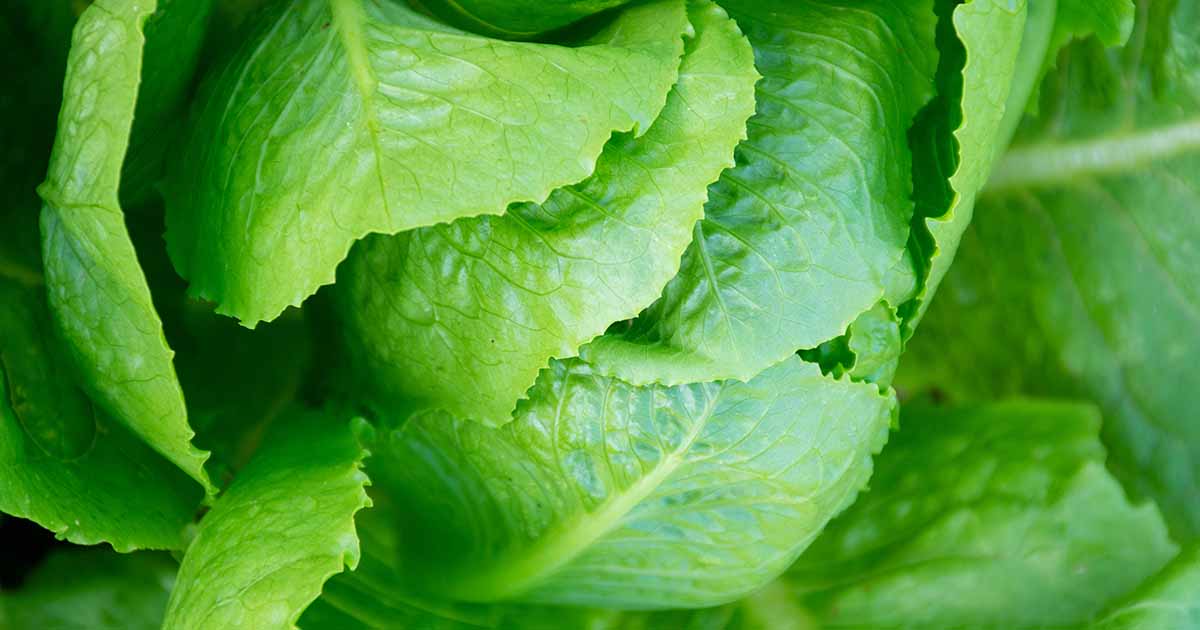
Lactuca sativa ‘Parris Island Cos’
If you could combine all the good features of modern lettuce cultivars and all the awesome characteristics of heirloom cultivars, you’d get something like ‘Parris Island Cos.’
This cultivar has the tight heads, disease- and bolt-resistance of modern plants, coupled with crisp, sweet leaves, and delicate white hearts of some heirlooms.
The heads grow large, up to a foot tall, but don’t become tough or bitter despite their size.
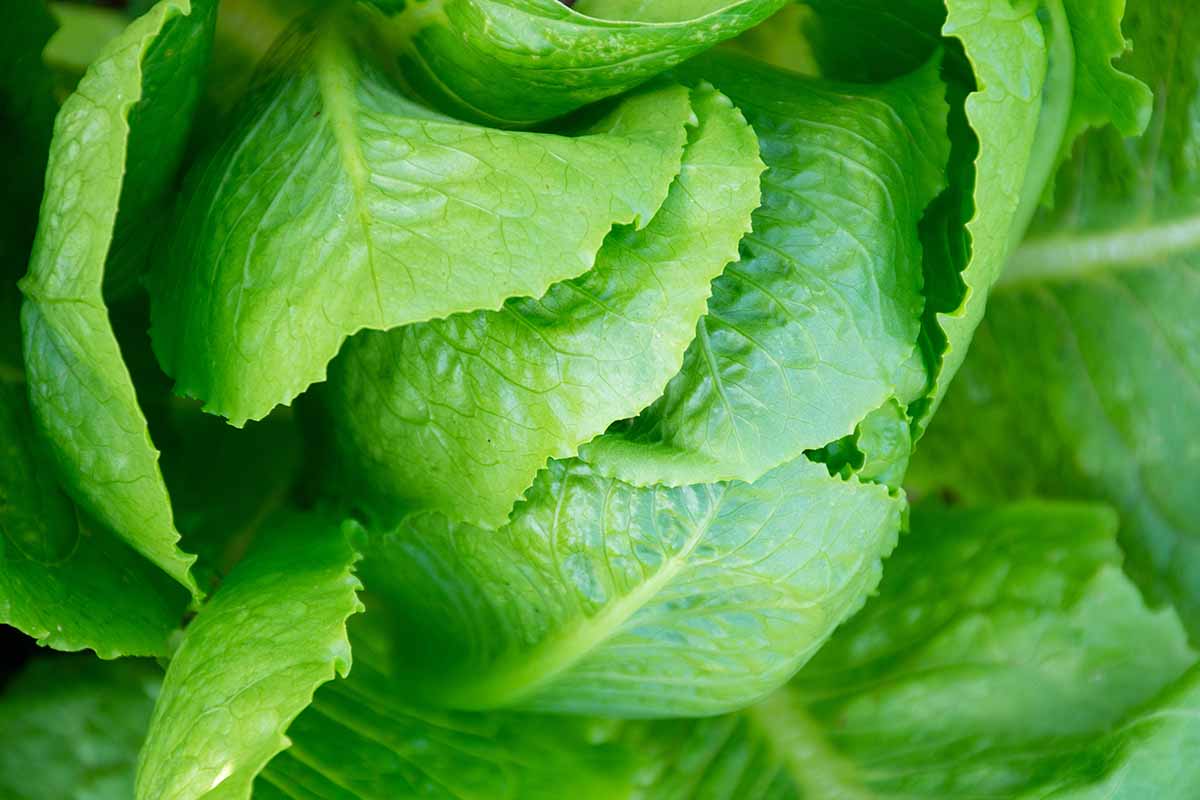
We link to vendors to help you find relevant products. If you buy from one of our links, we may earn a commission.
This cultivar is resistant to bolting and can tolerate some drought and plenty of heat, all while forming flavorful heads made up of perfectly cupped leaves.
Looking for one of the best romaine options out there? You found it. This guide will explain everything you should know about growing this stellar cultivar.
Here’s what’s on the menu:
Before we get our hands dirty, it helps to know a bit about where this plant comes from, and that’s what we’ll discuss first.
Cultivation and History
‘Parris Island Cos’ is the child of ‘PI 120965’ and ‘Dark Green Cos,’ the latter of which is known for its dark green, sweet, mild leaves that are perfect in Caesar salads.
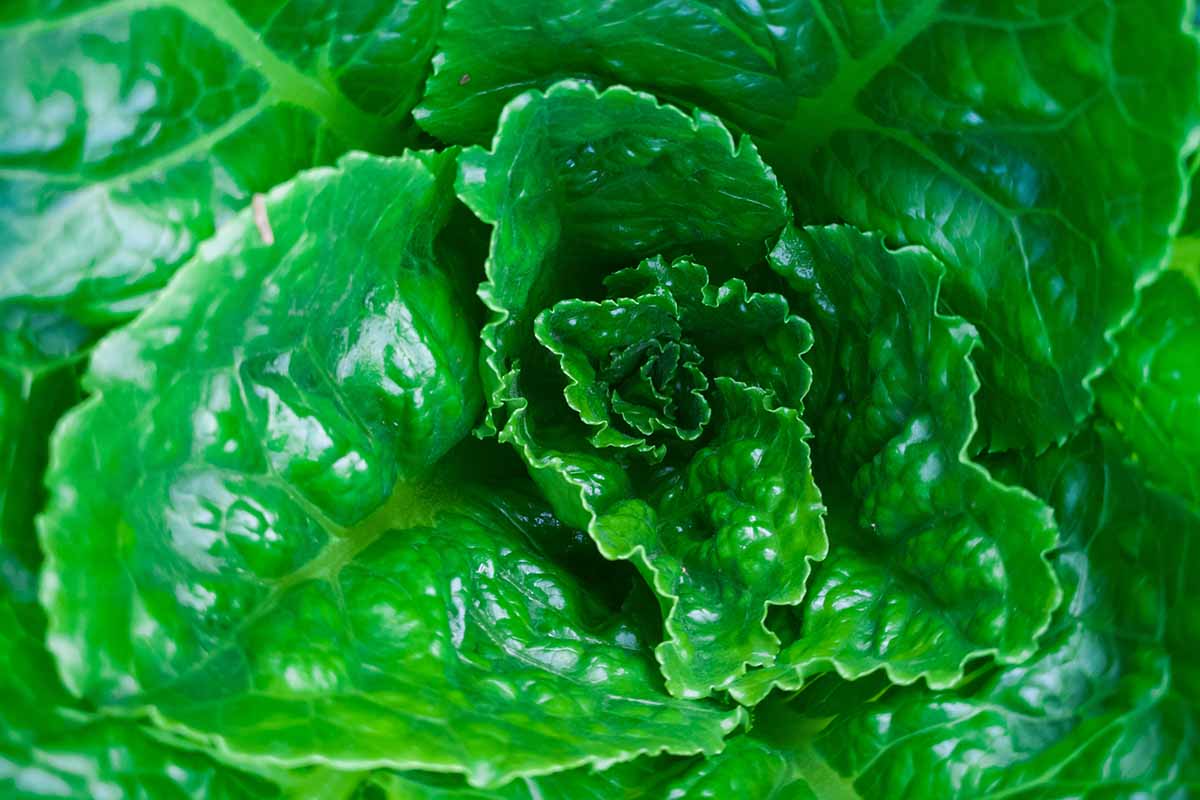
It was bred by Clemson College’s Agricultural Experiment Station in 1951 in Charleston, South Carolina, to thrive in the heat and humidity of the southern climate; and was released by Ferry Morse in the same year.
It’s a romaine-type that was named for Parris Island in South Carolina, and “cos” is another name for romaine.
Sometimes, this cultivar is just listed as ‘Parris Island.’ Don’t worry if the “cos” is lacking, it’s still the same glorious plant.
Propagation ‘Parris Island Cos’
If you want to start lots of plants, seeds are the way to go. If you just need one, look for a seedling at your local nursery.
But, since they’re so easy to start from seed, might as well go that route. Let’s talk about seed starting.
From Seed
About four weeks before the last predicted frost date, start your seeds indoors. You can also start them indoors in the late summer for growing in the fall.
Fill seed trays or individual four-inch pots with seed starting mix and sow the seeds three inches apart. Or, you can scatter them over the tray with the idea of thinning the seedlings later on. The seeds should be about an eighth of an inch deep.
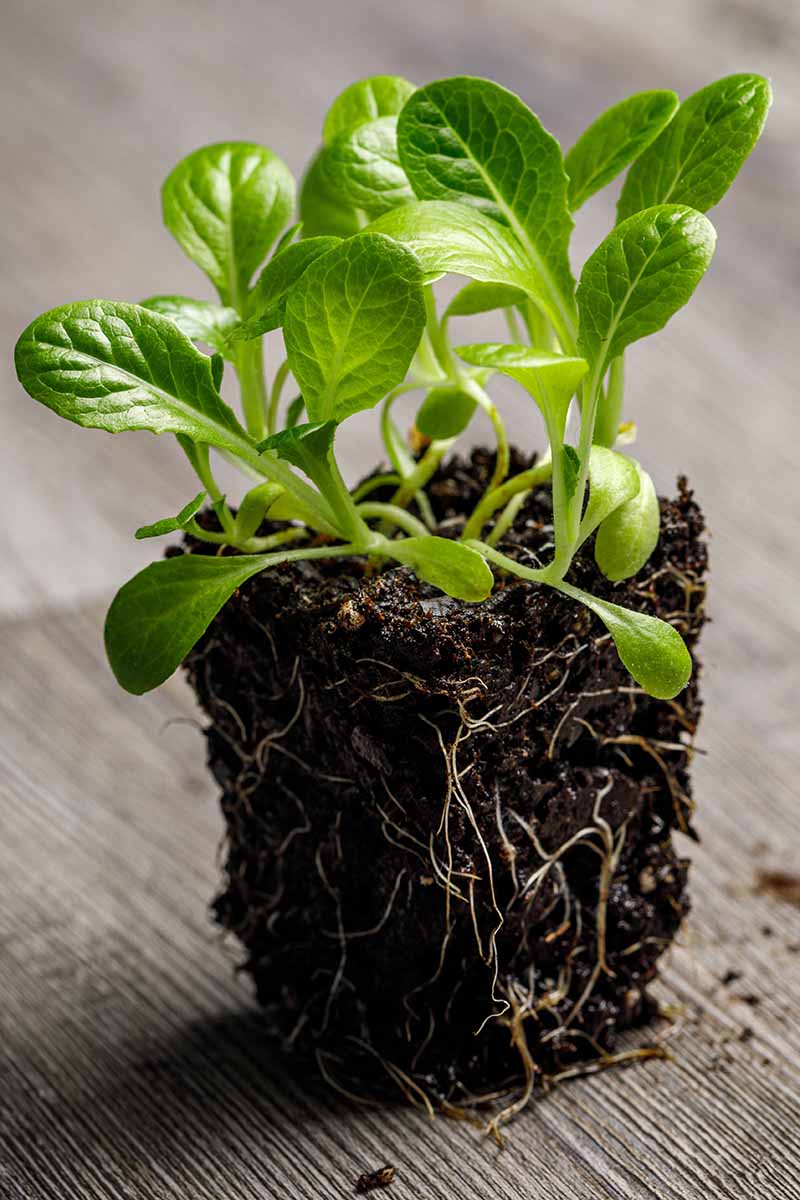
Place the containers or seed-starting trays in an area that receives a few hours of direct light or bright, indirect light. Keep the soil moist but not wet until they germinate, which should only take a week or so.
When the seedlings are about two inches tall, thin them to about three inches apart.
Once the seedlings are about three or four inches tall and the last predicted frost date has passed, you can transplant them out into the garden. Before you do that, harden the seedlings off. This process is easy but it takes about a week, so you need to plan ahead.
To harden them off, take the seedlings outside for an hour during the morning or early afternoon and set them in the area where you intend to plant. Then, take them back inside.
The next day, add another hour. Keep adding an hour each day over the course of a week. Now the plants are ready to go to their permanent home.
You can also direct sow seeds after the last predicted frost date.
Either broadcast the seeds and remember to thin them after germination, or space your seeds six to 12 inches apart. Keep the soil evenly moist and free from weeds until the plants are established.
From Seedlings
If you start your own seedlings indoors or purchase nursery starts, you’re going to want to get them in the ground or a larger growing container at some point.
When I say a larger container, don’t panic. This cultivar only needs a container that’s about six inches in diameter for each plant. The most important thing is that it has drainage holes.
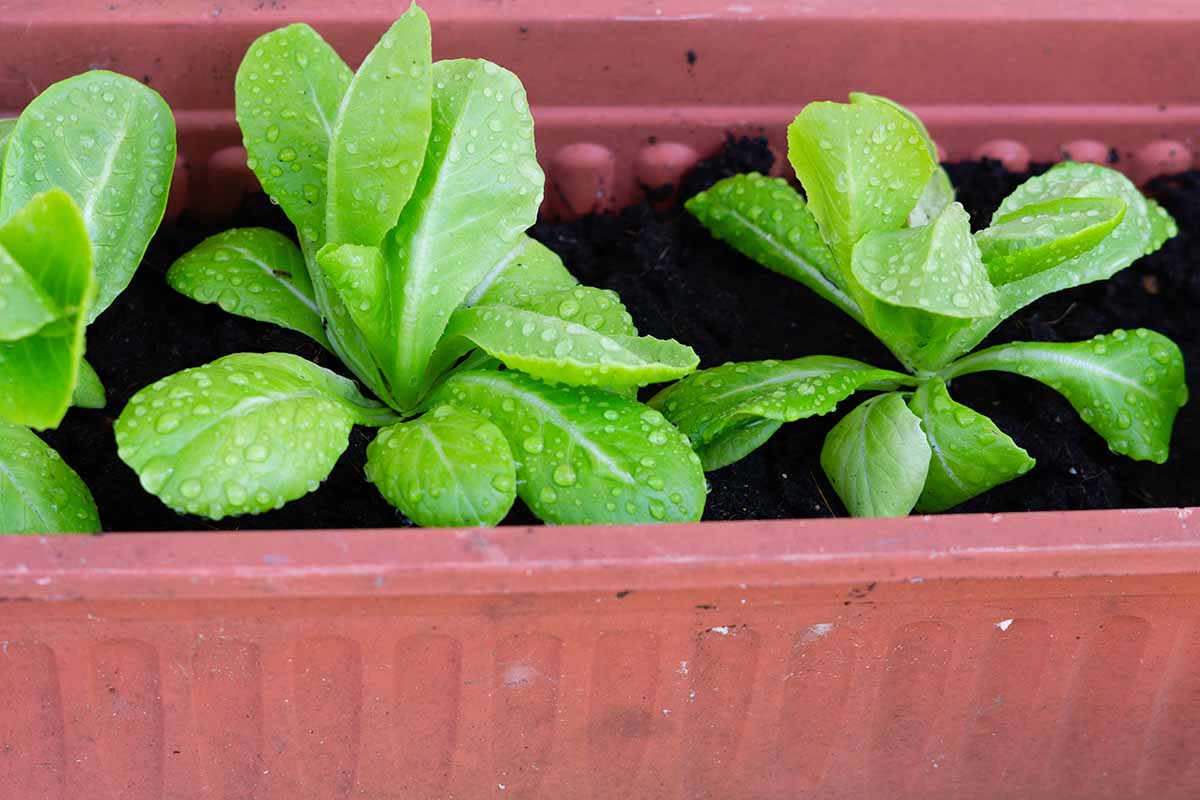
One of the excellent characteristics of ‘Parris Island Cos’ is that the heads grow extremely compact and upright.
You can really pack them into the garden and grow a lot of plants in a small spot.
Plant them about 12 inches apart, but you can get away with half that if you promise you’ll be watering at the soil level and not on the leaves. Expect slightly smaller heads if you pack them in.
When you’re ready to transplant, amend the soil with some well-rotted compost to improve drainage and water retention, and to add nutrients.
Dig a hole the size of the growing container and gently remove the seedling from its growing pot.
Lower the plant into the hole you made and firm the soil or potting mix around the roots. Water well so the soil is moist but not wet.
If you’re intending to grow your lettuce in containers, use a potting mix formulated for vegetables.
How to Grow ‘Parris Island Cos’
As I mentioned, this cultivar was bred to thrive in the hot, humid climate of coastal South Carolina. That’s not the kind of climate that most lettuces typically thrive in – they normally like cool weather best.
‘Parris Island Cos’ can tolerate drought and heat without bolting. It can even tolerate poor soil, to some degree. Somewhat sandy or clay soil won’t phase it much.
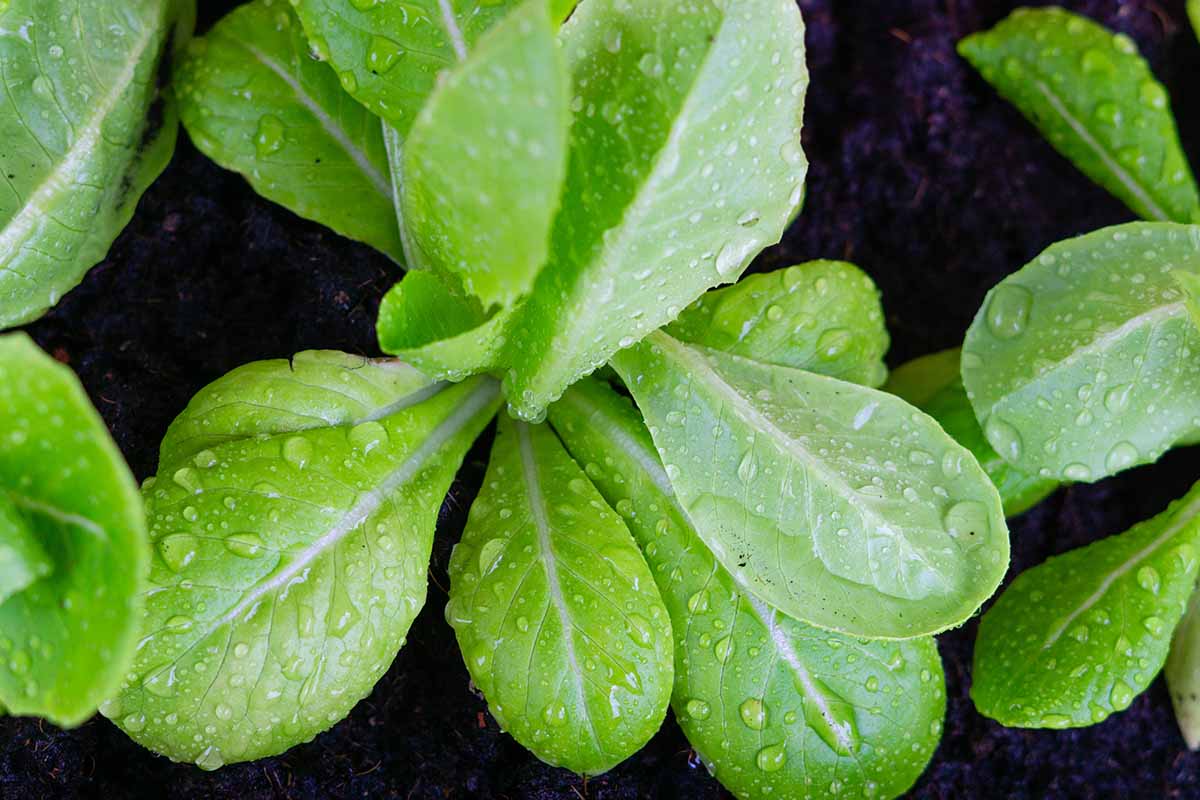
Still, if you want the largest, sweetest, healthiest heads, provide loose, organically-rich soil. I don’t have perfect soil in my garden, and I’m betting you don’t either.
But since lettuce doesn’t have a large root system, you can amend your existing soil pretty easily to make it just right for your ‘Parris Island Cos.’
Dig down six inches deep and a foot wide per plant, remove any rocks and work in the compost. Fill the area back in with the mixed soil.
It’s also easy to grow in a window box, container, or raised bed filled with potting or raised bed soil.
Learn more about how to grow lettuce in containers in our guide.
The plants need at least four hours of direct light per day, though up to eight is better. If you live in an area that gets super hot now and then, even in the spring or fall, you might want to give the plants some afternoon shade.
Regardless of where you grow them, if the temperatures climb above 80°F for any length of time, put an umbrella or shade cloth over the plants and give them an extra dose of water.

Speaking of water, ‘Parris Island Cos’ will grow and taste best if provided with consistent moisture, never letting the soil completely dry out or become too wet.
The soil should always feel like a well-wrung-out sponge. That said, this cultivar will tolerate some drought without compromising flavor or texture too much.
Since you used fresh potting soil or worked in compost to the soil at planting time there is no need for fertilizer.
Growing Tips
- Provide 4 to 8 hours of sun per day.
- Keep the soil consistently moist.
- Shade plants when temperatures climb over 80°F.
Maintenance
Now and then, the outer leaves might develop spots, brown or yellow areas, or become damaged.
Pluck these off before they become a drag on the rest of the plant.
Otherwise, you don’t need to do anything but water and keep an eye out for pests and diseases when growing ‘Parris Island Cos.’
Where to Buy ‘Parris Island Cos’
‘Parris Island Cos’ has long been a favorite of commercial growers because of its uniform heads and quick growth, but this cultivar has also become popular with home growers.
That means you can find it in lots of places where lettuce seeds are sold.
Burpee, for example, sells packs of 1,000 seeds.
Or, if you’re looking for a wider range of quantity options, from small packets to bulk, visit True Leaf Market.
Managing Pests and Disease
‘Parris Island Cos’ is more resistant to diseases than many other cultivars out there.
But rabbits and deer love it just as much as any other lettuce they can get their teeth on. If you have regular bunny or deer visitors, consider growing your plants in containers on a patio or porch.
Or you could cover them completely in a wire cage. That won’t protect them from slugs, though.
Slugs and snails are the other major threat to your lettuce harvest. If they come to visit, use your favorite pellet or other slug control method.
I often grow my lettuce in wall-mounted containers because the slugs in my area are relentless.
But they don’t seem to find the plants hanging five feet up on the side of my garage. The lengths we’ll go to in order to avoid pests, right?
If you’d like to try some wall-hanging planters, these from the Summer Flower store at Amazon are excellent because they’re the right size, have good drainage, and come in a variety of colors.
Summer Flower Wall Hanging Planters
Wouldn’t it be awesome if there was lettuce that was immune to insect pests like aphids, beetles, caterpillars, and fungus gnats? Sorry, that hasn’t been bred (yet).
’Parris Island Cos’ is a tasty meal for all kinds of pests, resulting in holey leaves, yellowing, and spreading diseases. Read our guide to lettuce pests to learn more about the common bugs that feed on lettuce and how to deal with them.
This cultivar is resistant to mosaic virus. It’s somewhat susceptible to common lettuce diseases like leaf spot, soft rot, damping off, and downy mildew.
If something doesn’t look right with your plants, read our guide to lettuce diseases to identify the problem and learn how to address it.
Harvesting
The whole, mature heads are ready in 70 days, but the young leaves are good to go whenever they reach a size that you like.
The young leaves are delicious, and this cultivar is extremely popular as a baby leaf type. If you allow the heads to mature, they have a mild flavor and perfectly cupped shape that makes them a go-to for stuffing.
Use a pair of clean scissors to clip off leaves as you need them, or use a clean knife to slice off the entire head as close to the soil as you can.
Learn more about how to harvest lettuce in our guide.
Preserving
In 2020, researchers at the USDA’s Agricultural Research Service led by geneticist Ivan Simko found that this cultivar keeps better than most other romaine types after harvesting.
I’ve been able to store the heads and leaves for several weeks in the crisper drawer with a desiccant.
I wrap them in a paper towel and put them inside a plastic bag, and they stay fresh for an absurdly long time, compared to other lettuces.
Recipes and Cooking Ideas
Two words: Caesar salad. I have never found another cultivar that works as well in a Caesar salad as ‘Parris Island Cos.’

It doesn’t matter if you like your salad anchovy-heavy (raises hand) like the one from our sister site, Foodal, or prefer a vegetarian option, this lettuce should be the base.
Really, any salad tastes awesome with ‘Parris Island Cos.’ If you like lettuce wraps, it’s also the perfect choice.
Quick Reference Growing Guide
| Plant Type: | Annual vegetable | Water Needs: | Moderate |
| Origins: | Mediterranean region | Tolerance: | Frost, cool temperatures |
| Hardiness (USDA Zone): | 2-11 | Maintenance: | Low |
| Season: | Spring, fall | Soil Type: | Loamy, loose |
| Exposure: | Full sun to partial shade | Soil pH: | 5.8-6.5 |
| Time to Maturity: | 70 days | Soil Drainage: | Well-draining |
| Spacing: | 6-12 inches | Companion Planting: | Beets, carrots, dill, kale, onions, Swiss chard |
| Planting Depth: | 1/8 inch (seeds), same depth as nursery container (transplants) | Avoid Planting With: | Brassicas, melons, squash |
| Height: | 12 inches | Family: | Asteraceae |
| Spread: | 6 inches | Genus: | Lactuca |
| Growth Rate: | Fast | Species: | Sativa |
| Common Pests and Diseases: | Deer, rabbits; Aphids, beetles, caterpillars, fungus gnats; bottom rot, damping off, downy mildew, and leaf spot | Cultivar: | Parris Island Cos |
Enjoy a Trip to the Islands
If you’ve struggled to grow lettuce because the temperatures get too hot in your area, no doubt you’ll be rejoicing now that you’ve found this option.

How do you plan to use the leaves? What’s your favorite recipe? Share with us in the comments section below.
And for more information about growing lettuce in your garden, check out these guides next:







